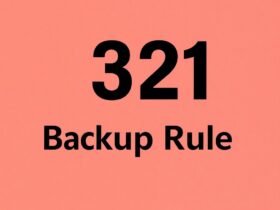Understanding different types of data visualization can be a valuable skill in our heavily data-driven world. As data continues to take center stage in numerous industries, the ability to interpret and leverage different charts and graphs is becoming increasingly important. A powerful tool for visualizing complex data is the bubble chart. A bubble chart is unique in the amount of information it communicates through a single image. Within this article, we will explore the world of bubble charts. Keep reading to learn more.
A Deep Dive Into Bubble Charts

The main crux of the bubble chart lies in its unique ability to visualize three data dimensions. This contrasts starkly with more conventional charts, which typically only visualize two dimensions of data, such as bar charts or pie charts. The three dimensions in a bubble chart are displayed through the x-coordinate, y-coordinate, and the bubbles’ size, enabling three variables to be represented at once.
These charts are commonly used in scenarios where the volume of data is large and simultaneous comparison is highly desirable. Examples of the liquid applications of bubble charts are within economics, business analytics, and social research. Because of their multidimensional nature, bubble charts can provide a valuable perspective on trends and patterns that could be missed using other visualizations.
Understanding the unique way data is represented in a bubble chart is the first step toward understanding how to read and interpret it correctly. This understanding, combined with familiarization with how bubble charts are commonly used, is a key part of developing competency in data visualization.
Variables and Dimensions: Core Elements of Bubble Charts
Representing more variables in a single chart adds depth and complexity to the data visualization—allowing users to discern patterns and relationships that might not be apparent with two-dimensional charts. Interestingly, the variables within a bubble chart do not need to be strictly numerical, they can be categorical or qualitative, with the variable’s value determining the bubble’s size or position.
More meaningful information could be extracted from a bubble chart than a regular scatter plot. This is due to using the bubble size to encode another variable covering a third dimension. In economic research, a bubble chart may plot GDP per capita on the y-axis and life expectancy on the x-axis, with the size of the bubble representing a country’s population.
Bubble charts can be particularly useful in comparing variables, examining distribution, and displaying relationships between variables. Large datasets and those with a diverse scope of data points can be displayed and interpreted compactly and insightfully.
The Anatomy of a Bubble Chart

A bubble chart consists of several key components that can help decode rich information packed into it. This includes the x-axis and y-axis, both serving as the base for plotting the bubbles, representing respective variables. Both axes should be clearly labeled to offer context for position data. The bubbles themselves, each represent a data point with its position based on the variables of the x and y-axis. Their size is another variable and should be proportional to the exact values they represent.
The color of the bubbles can add another dimension to the chart by encoding additional data. Colors may indicate differing categories or groups within the data, allowing for comparisons among subsets of data. A legend explaining what each color represents should be present. The chart may also feature tooltips when hovering over a bubble, revealing precise values or additional information.
The chart’s title and subtitle provide summarizing information and setting the context for the chart. When a bubble chart is labeled correctly, it becomes much easier to interpret and can be a powerful tool for presenting multivariate data.
Reading and understanding bubble charts is an acquired skill combining attention to detail, intuition, and practice. Immersing yourself in the world of bubble charts not only empowers you to interpret complex data with ease but also imparts a unique lens to view the trends and patterns that data holds, ultimately making you a more data-driven and informed individual.



























